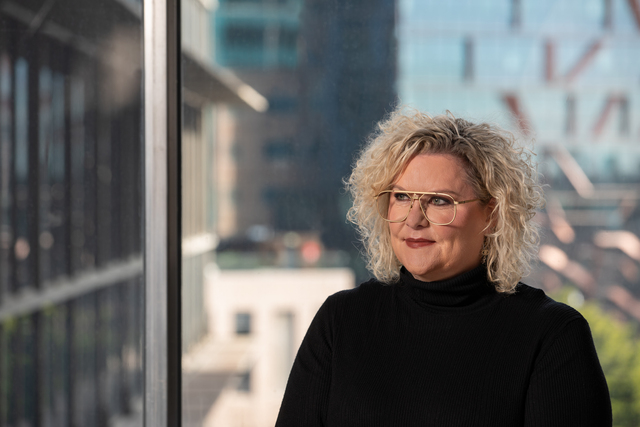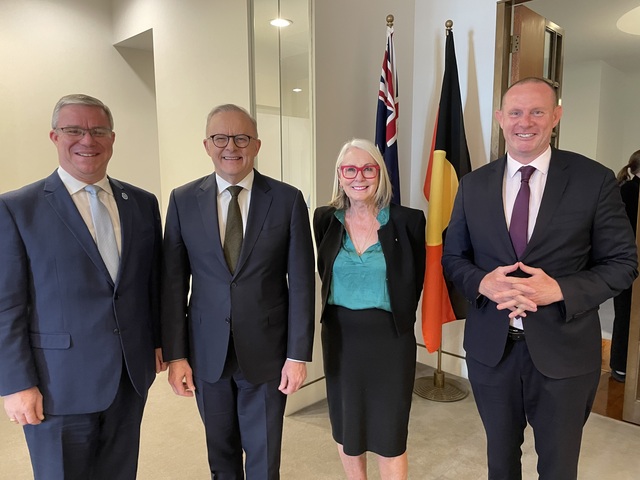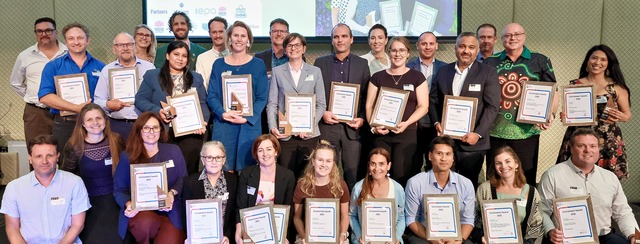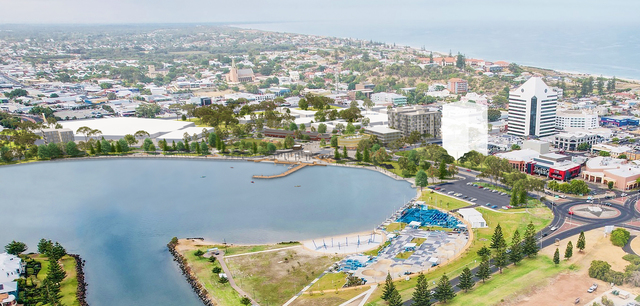Off-the-road (OTR) tyres are tough and built for demanding conditions, and Sunshine Coast Council is harnessing their performance qualities by using crumb rubber from OTR tyres in new asphalt roads.
Sunshine Coast road users travelling along Railway Parade (Glass House Mountains), Spalls Road (Diddillibah) and Perlan Street (Nambour) are helping to use a new mix of asphalt made from end-of-life OTR tyres used by Queensland mining and agriculture industries.
Recycled rubber from end-of-life tyres has been used in Australia’s roads and worldwide for many decades, but what is exciting is the potential for OTR crumb rubber to help Australia build more resilient and more sustainable ‘roads of the future’ – which is exactly what Sunshine Coast Council is aiming to deliver for residents and businesses as part of its program of testing emerging technologies for local application.
Sunshine Coast Council’s Community and Transport Portfolio Councillor Rick Baberowski said it was an important project for the region.
“The trial is an important part of our approach to becoming Australia’s most sustainable region,” he said.
“I am pleased to see Sunshine Coast roads in an innovative partnership trialling a reseal solution with a higher bar on sustainable outcomes. “We look forward to seeing the results of the trial which aims to ensure safety, environmental and cost saving benefits for our community.”
The project is a joint endeavour by Sunshine Coast Council and regional businesses, Boral and its subsidiary Allens Asphalt, Carroll Engineering and Puma Energy Bitumen.
It is being led by the Australian Flexible Pavement Association (AFPA) with support from RMIT University and Tyre Stewardship Australia (TSA).
TSA CEO Lina Goodman said the trial would assess the right mix of rubber binder and asphalt for optimum performance in low to high traffic conditions, for example the Perlan Road test site contains 1.7 per cent of rubber content by total mass of mix.
It will also provide a real-world example of how a ‘circular tyre economy model’ can enable rubber products used by regional industry – in this case OTR tyres from Boral’s quarry operations – to be used locally to build more resilient roads and pavements.
The potential benefits for local communities and industries are far reaching, such as the reduction of used tyres remaining in unrecovered or low value outcomes, to economic advantages such as the creation of local jobs, business opportunities and regional development.
“The use of locally sourced tyre-derived materials in regional, rural, and remote infrastructure, has the potential to put a big dent in the 245,000 tonnes of OTR rubber products generated each year, most of which is buried on-site or dumped, creating potential for environmental harm, health risks and missed economic opportunities,” Ms Goodman said.
“The Sunshine Coast is in a critical catchment area with a high concentration of OTR rubber product usage.
“If successful, this project has the potential to have a positive impact, by creating reliable economic opportunities for local industry and businesses and enabling local OTR rubber product users to find a local homegrown market for their products.
“Working collaboratively is how we solve our environmental and economic challenges – with councils and industry pulling together to provide a better option for local operators, such as mining and agriculture, who currently have limited options available to contribute to the circular economy.
“TSA is proud to invest in this initiative which showcases Australian designed, developed and built solutions that accelerate the sustainable management, recycling and productive use of OTR tyres that have reached the end of their first life.”
The results of the trial will provide other councils in regions where off-the-road tyres are used, with valuable technical information to leverage this model for the benefit of industry and communities in their local government area.
Councils and OTR rubber product users can contact AfPA for a report, based on accelerated aging tests undertaken by RMIT, and Life Cycle Assessments which are currently being developed.








